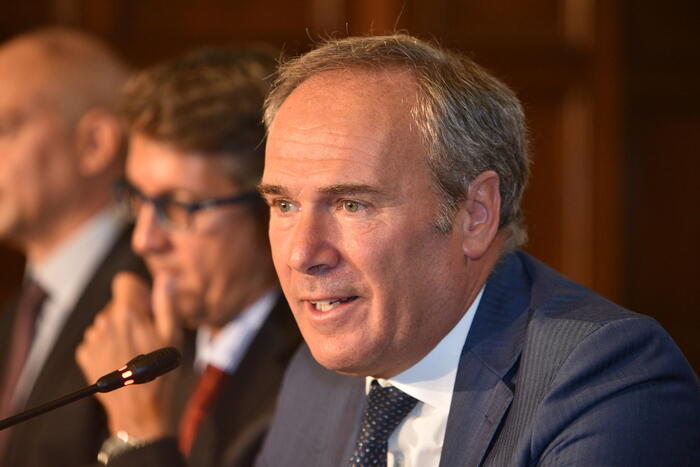Banknotes of the dollar, euro and other currencies, in a file image.CHRIS HELGREN / Reuters
Change in trend or just a slight truce?
The global sum of public and private debt registered its first fall in two and a half years in the first quarter, according to data published this Thursday by the Institute of International Finance (IIF, the global banking association).
The liabilities of governments, companies, financial entities and families around the planet fell between January and March by 1.7 trillion dollars (1.4 trillion euros), a figure halfway between the GDP of Spain and Italy .
Despite the decline, outstanding obligations worldwide remain in the area of all-time highs: $ 289 trillion, 360% of world GDP. Since the outbreak of the coronavirus crisis, the sum of the debt contracted by the public sector and the private sector throughout the globe has been 30 trillion dollars, which has meant adding 12% more to the previous indebtedness . Two thirds correspond to the new debts contracted in rich countries, where States have had more room to implement countercyclical policies and companies have had more room for debt to face the total drought of income.
The very slight global fall registered in the first quarter came, fundamentally, from the hand of the decline in debts in rich countries, where they contracted by 2.3 trillion dollars, to 203. On the opposite side is the emerging bloc ( China included): There, outstanding bonds rose by $ 600 billion (or $ 0.6 trillion) to a new record of $ 86 trillion.
The good news, however, is that the escalation in developing nations was notably less in the initial stretch of 2021 than in previous quarters.
Spain, among the countries in which liabilities grew the most
With the economies of the world still languishing after the blow of the pandemic, debt over GDP - the most logical measure to know real financial health - also rides at all-time highs awaiting the consolidation of an economic recovery that already knocking on the door.
However, that growth has slowed to a great extent after a jump of 36 percentage points in 2020. "The addition of new debt has slowed and the issuance of bonds is again below pre-covid-19 levels" , explain IIF technicians, who also predict that debt ratios should fall slightly this year "given the projected recovery in global economic activity."
More information
Europe sees recovery
Spain closed 2020 with the highest deficit in the EU and one of the highest debts due to the pandemic
Greece, Singapore and Spain have been the countries in the world in which public and private debt has risen the most since the virus arrived, “although” - the economists of the financial bosses say - “the pace has slowed down in the first quarter of 2021 ″.
The increase in government spending was the main factor behind the increase in rich countries, and this was especially pronounced in five of them: Slovakia, Greece, Cyprus, Italy and - again - Spain.
The greatest risk in emerging markets
However, the focus of concern of the Institute of International Finance is elsewhere: in the public debt of emerging countries. Although “relatively stable” in 2021, the GDP ratios have gone from 52% to 60% in just 15 months, since the start of the health crisis. “The increase has been greater in mature economies —where the jump has been from 110% to 135% in the same period—, in part due to greater fiscal restrictions. But the increases have been significant, with the median of emerging governments at levels 15 points higher than those of 2019 ″, they point out.
Two issues particularly concern the agency in middle-income countries: weak public revenues, still under the influence of lockdowns, and vaccination - the key factor in the still incipient economic rebound - which is progressing at a noticeably slower pace. than on the rich block. This cocktail, explains the Washington-based body, makes states "with high financing needs risk high interest spending relative to their income and GDP."
The IIF's recommendation for developing economies is clear: they must improve collection systems to increase income capacity, although it recognizes that the “political and social tensions derived from the pandemic could limit the will of governments when it comes to making structural fiscal reforms ”.
And that lack of government drive, he stresses, increases dependence on international debt markets, today slack but whose future evolution is unknown.
The price of money is on the ground and will continue like this for a while longer.
But not always.
Less debt in dollars in Brazil and Argentina
Within this emerging group, Brazil and Argentina have been the only countries that have registered decreases in the levels of debt in foreign currency; They have taken advantage of the good tone of the debt markets, with interest rates at historic lows, to convert dollar bonds into paper in local currency, thus avoiding that exchange rates could complicate their repayment.






